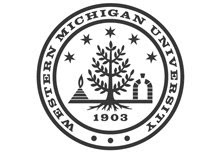The Sunseeker team is preparing WMU’s solar- powered racecar for the 2005 cross-country race, now called the North American Solar Challenge
This year’s entry is a modified version of the Sunseeker 03, which placed 5th in a field of 20 vehicles in the 2003 American Solar Challenge and won the EDS Gold Award for Best Solar Car Design. The 2,500- mile race, takes place in both the US and Canada. At least 41 teams - US, Canadian, & international – are interested in competing.
The race starts in Austin, Texas, on July 17 and ends July 27 in Calgary, Alberta. The route generally follows US-75 North to Winnipeg, Manitoba, and then heads West on Canadian Highway 1 to Calgary.
Between Austin and Calgary, stops and checkpoints are planned for Weatherford, Texas; Tulsa, Oklahoma; Topeka, Kansas; Omaha, Nebraska; Sioux Falls, South Dakota; Fargo, North Dakota; Winnipeg, Manitoba; Brandon, Manitoba; Regina, Saskatchewan; and Medicine Hat, Alberta,
A pre-qualifying event is set for May 15 through 20 in Topeka, Kansas, to inspect and test entries from North America.
Cars that qualify at this event will be allowed to drive laps on a 2.1 mile closed track to prove roadworthiness and to earn a starting position for the July race. During the week of July 10, a final qualifier will be open to all international entries and cars that failed to qualify in May.
The WMU Sunseeker race team will leave Kalamazoo on July 6 for Austin, Texas, and return from Calgary on August 1.
According to Abe Poot, a project advisor, a number of changes are in the works. The car is getting a new 25 Kg 150 Volt Lithium-Polymer battery pack and a state-of-the-art battery protection system. The motors are being rewired to run at higher voltage and lower current.
Improvements are planned for the rear trailing arm suspension, ventilation system, and leading edge aerodynamics. A new canopy design offers clearer bubble and better tinting.
Additions to the car include a new rear vision camera and LCD display and a Global Positioning System for improved navigation
The team plans to complete the modifications by the end of March to get it on the road for testing. In April it will be displayed at the SAE Congress at Cobo Hall.
Expenses of the Sunseeker Project are being funded by private donations accumulated over the past several years. The projected budget shows this fund will fall short of meeting all of the race expenses.
Additional contributions are welcome and, to be tax deductible, can be made through the WMU Foundation. See the Sunseeker web site at http://www.wmich.edu/sunseeker and select the donate bar for more information. Other ways of supporting the team would be to sponsor specific needs such as the cost of uniforms, leasing support vehicles, leasing cell phone communications, the race registration fee, and food and lodging expenses.
For more information about how you can help the team, call the team advisor, Abraham Poot at 269-276-3372 or contact him via email at mailto:abraham.poot@wmich.edu.









